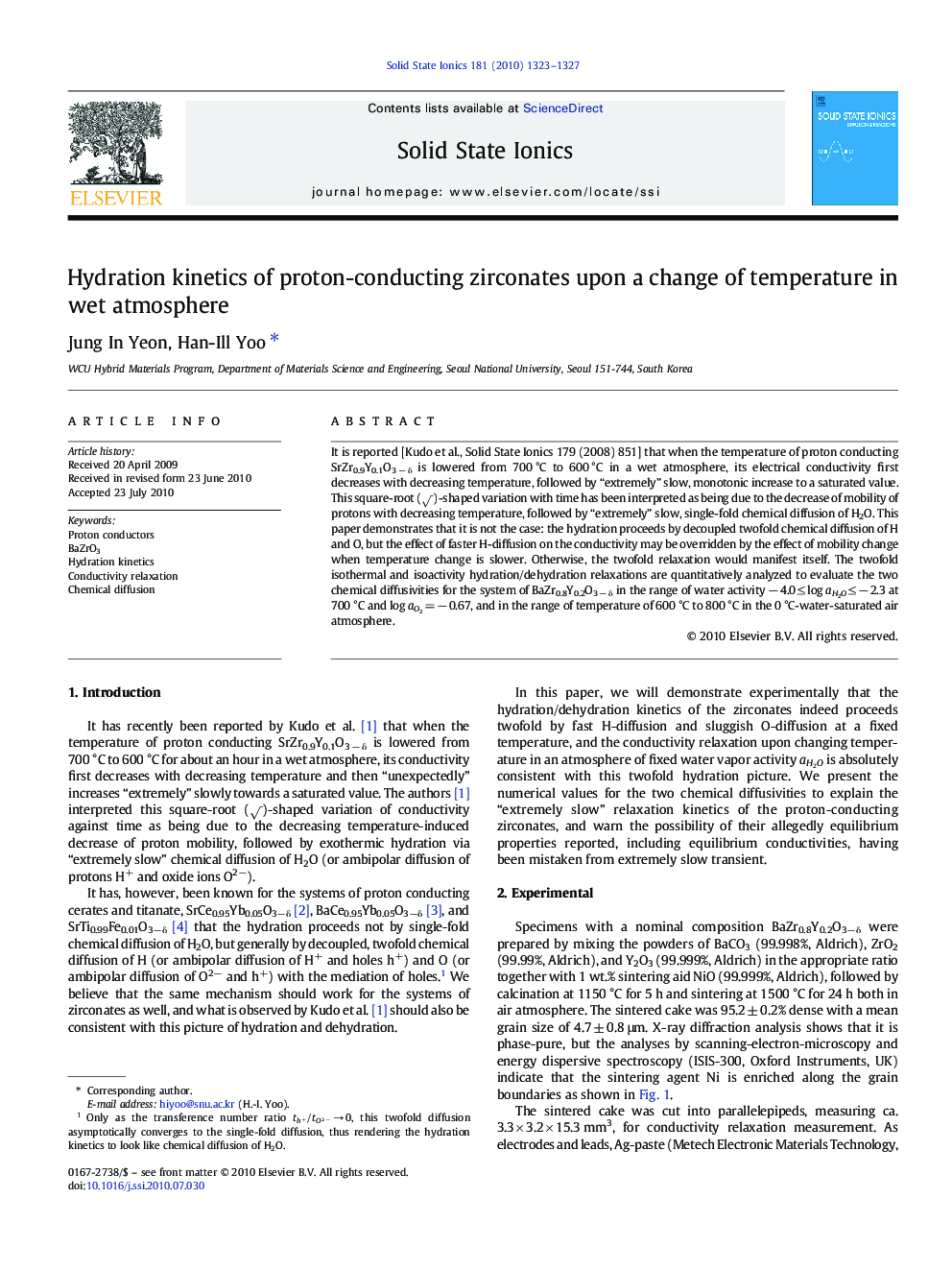| Article ID | Journal | Published Year | Pages | File Type |
|---|---|---|---|---|
| 1296650 | Solid State Ionics | 2010 | 5 Pages |
It is reported [Kudo et al., Solid State Ionics 179 (2008) 851] that when the temperature of proton conducting SrZr0.9Y0.1O3 − δ is lowered from 700 °C to 600 °C in a wet atmosphere, its electrical conductivity first decreases with decreasing temperature, followed by “extremely” slow, monotonic increase to a saturated value. This square-root ()-shaped variation with time has been interpreted as being due to the decrease of mobility of protons with decreasing temperature, followed by “extremely” slow, single-fold chemical diffusion of H2O. This paper demonstrates that it is not the case: the hydration proceeds by decoupled twofold chemical diffusion of H and O, but the effect of faster H-diffusion on the conductivity may be overridden by the effect of mobility change when temperature change is slower. Otherwise, the twofold relaxation would manifest itself. The twofold isothermal and isoactivity hydration/dehydration relaxations are quantitatively analyzed to evaluate the two chemical diffusivities for the system of BaZr0.8Y0.2O3 − δ in the range of water activity − 4.0 ≤ log aH2O ≤ − 2.3 at 700 °C and log aO2 = − 0.67, and in the range of temperature of 600 °C to 800 °C in the 0 °C-water-saturated air atmosphere.
